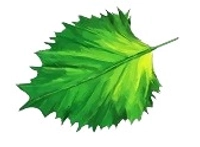Bauhinia Purpurea (Purple Orchid Tree)
Bauhinia Purpurea, commonly known as the Purple Orchid Tree, is a beautiful flowering tree native to tropical and subtropical regions of Asia, including India. Known for its striking purple orchid-like flowers, this tree is an eye-catching addition to any garden or landscape. With its vibrant blooms and graceful appearance, the Purple Orchid Tree is a popular choice for both residential and public gardens.
Benefits:
- Ornamental Value: The most notable feature of Bauhinia Purpurea is its stunning purple flowers, which bloom in clusters and resemble orchids. These flowers create a striking visual display, making the tree a popular choice for landscaping.
- Pollinator Attraction: The tree’s flowers attract a variety of pollinators, including bees, butterflies, and birds, contributing to local biodiversity.
- Shade Provider: With its broad canopy and dense foliage, the Purple Orchid Tree provides ample shade, making it an excellent choice for planting in parks, gardens, and along streets.
- Medicinal Uses: Various parts of the tree, including the flowers, leaves, and bark, are used in traditional medicine for treating ailments such as fever, digestive issues, and skin conditions.
- Air Purification: Like other trees, Bauhinia Purpurea helps improve air quality by absorbing carbon dioxide and releasing oxygen, contributing to a healthier environment.
Plant Care Instructions:
- Sunlight: Bauhinia Purpurea thrives in full sunlight and requires at least 6-8 hours of direct sunlight each day to produce abundant blooms.
- Soil: The tree prefers well-drained, sandy or loamy soil. It can tolerate a range of soil types, including slightly acidic to neutral pH levels.
- Watering: The tree is relatively drought-tolerant once established but requires regular watering during its early growth stages. Ensure the soil is well-drained to avoid waterlogging.
- Fertilization: Apply a balanced fertilizer during the growing season (spring and summer) to encourage healthy growth and vibrant flowers. Organic compost can also be used to enrich the soil.
- Pruning: Prune the tree to remove dead or damaged branches and to maintain its shape. Regular pruning encourages better airflow and promotes healthy growth.
Common Problems and Solutions:
- Yellowing Leaves: Yellowing leaves can be a sign of overwatering or nutrient deficiency. Ensure the tree is not overwatered and apply a balanced fertilizer to restore nutrients.
- Pest Infestation: Aphids, scale insects, and caterpillars may occasionally infest the tree. Use neem oil or insecticidal soap to control pests effectively.
- Flower Drop: Insufficient sunlight, water stress, or nutrient deficiency can cause flowers to drop prematurely. Ensure the tree receives adequate sunlight and water, and apply fertilizer as needed.
- Leaf Spot Diseases: In humid conditions, the tree may develop fungal infections such as leaf spots. Improve air circulation around the tree and apply fungicides if necessary.
- Root Rot: Overwatering or poorly drained soil can lead to root rot. Ensure the soil is well-drained and avoid excessive watering.
Please Note: Images are for reference purposes only. Actual product may vary in shape or appearance based on climate, age, height, etc. The product is replaceable but not returnable. Plants will be delivered in black nursery poly bag or pot unless mentioned on the product page.
